How To Install Replacement Windows
Installing Replacement Windows
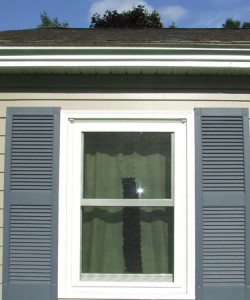 Installing replacement windows is a great DIY project that can help you save thousands of dollars on energy bills over the life of the windows. Replacement window manufacturers have perfected the design of replacement windows so that anyone with moderate do-it-yourself skills can easily install them.
Installing replacement windows is a great DIY project that can help you save thousands of dollars on energy bills over the life of the windows. Replacement window manufacturers have perfected the design of replacement windows so that anyone with moderate do-it-yourself skills can easily install them.
I recently helped my dad replace five old wood windows with new Harvey Tribute Triple Pane energy efficient replacement windows. The entire project took about five hours from start to finish and cost under $1,500. The new windows are more than 40% more energy efficient and likely to pay for themselves in several years or less. I recommend you read my previous article on How To Measure For Replacement Windows if you’re thinking about installing some replacement windows yourself.
Steps To Install Replacement Windows
The following basic installations steps apply to most window replacements. However, there are always some variations depending on the type of existing window. I recommend you check with the replacement window manufacturer for specific installation instructions.
Step 1 – Remove Window Casing and Inside Stops
The first step to install a replacement window is to remove the window casing from the sides and top of the window. You’ll also need to remove the inside stops from the sides and top of the window (see photo and diagram below). Be sure to remove the stops and casing carefully if you plan to re-use them after the new replacement windows are installed.
Step 2 – Remove Parting Stop or Jamb Liner
The next step involves either removing the wood parting stops (see photo and diagram above) or an aluminum or plastic jamb liner (see photo below). Older windows usually have the parting stops along with counter-weight balances. Older replacement windows typically have the plastic or aluminum jamb liners as shown below. At this point you need to be sure the depth from the inside of the blind stop and interior stop are a minimum of 3-1/4 inches (this is a very standard dimension and should not be an issue).
Step 3 – Check The Existing Sill For Level
Check the window sill to be sure it’s level. If it’s out of level then you need to shim it before installing the new replacment windows.
Step 4 – Test Replacement Window Fit & Sill Expander
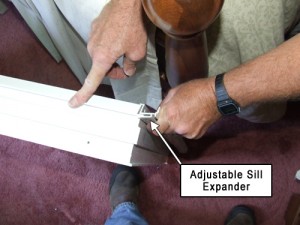 Most replacment windows come with some sort of adjustable sill expander or sill angle. For our project the Harvey Windows came with an adjustable sill expander shown in the adjacent photo. The sill expander just clips onto the bottom flange of the window unit.
Most replacment windows come with some sort of adjustable sill expander or sill angle. For our project the Harvey Windows came with an adjustable sill expander shown in the adjacent photo. The sill expander just clips onto the bottom flange of the window unit.
The adjustable sill expander fills the space from the bottom of the replacement window unit to the top of the sloping sill. If you’re windows have flat sills then you can remove and discard the sill expander.
Before you install the sill expander on the window be sure to hold it in the window opening and mark it so it can be trimmed around the blind stops. You can easily trim the sill expander with a utility knife or hack saw.
At this point you should install the replacement window from inside the house into the window opening. The unit should fit up against the exterior blind stops which keep it from falling “out” towards the outdoors. This step is much easier with two people, one person can hold the window in place while the other person checks the fit and gaps around the opening. You may need to shim the window up somewhat in order to adjust the height of the sill expander.
Step 5 – Insulate Sill and Header
Staple some fiberglass insulation to the old sill. This will help insulate the space between the old sloping sill and the new replacement window. Most replacement windows also come with an adjustable header to fill the top space. The adjustable header should also be filled with insulation.
Step 6 – Caulk Blind Stops
At this point you’re just about ready to install the new replacement window. Run a heavy bead of caulking on the inside of the blind stops, be sure to do the sides and top. When you install the replacement window it will come in contact with the caulking to create a weather tight seal.
Step 7 – Install Replacement Window
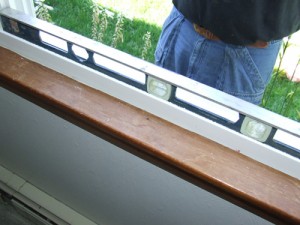 Set the bottom of the replacement window in the opening and tilt up the window until the window comes in contact with the caulking on the blind stops. Be sure to center the window and check it for level and plumb.
Set the bottom of the replacement window in the opening and tilt up the window until the window comes in contact with the caulking on the blind stops. Be sure to center the window and check it for level and plumb.
Once the window is plumb and square you can install the factory supplied screws through the new replacement window jambs into the old wood jambs. Most replacement windows come with pre-drilled holes to screw through. Be careful not to over-tighten the screws as you can damage the window and also cause it to operate poorly.
Step 8 – Insulate Between New Window and Old Jambs
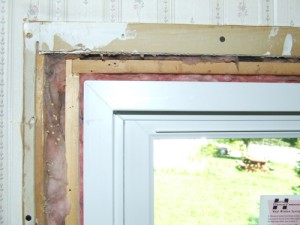 Now you need to insulate between the new replacement window unit and the old window jambs. I really don’t recommend using spray foam from a can (even the low expansion kind) for this task. Replacement windows are just too sensitive to movement, if the foam expands too much the window will not operate correctly. Instead, insulate the space with fiberglass insulation, with the help of a putty knife to push it into tight spaces. After you insulate with fiberglass you can seal the cracks with caulking for a better air seal.
Now you need to insulate between the new replacement window unit and the old window jambs. I really don’t recommend using spray foam from a can (even the low expansion kind) for this task. Replacement windows are just too sensitive to movement, if the foam expands too much the window will not operate correctly. Instead, insulate the space with fiberglass insulation, with the help of a putty knife to push it into tight spaces. After you insulate with fiberglass you can seal the cracks with caulking for a better air seal.
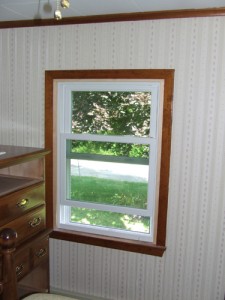 Step 9 – Re-Install Interior Stops & Casing
Step 9 – Re-Install Interior Stops & Casing
Now you can re-install the old interior stops (if they still work, in our case we needed to make new ones because of the difference in window sizes) or install new ones. The interior stops also help hold the window in place.
After the interior stops are installed you can re-install the old casing or add new casing. For our project we were able to save the old casing and re-install it. Also note that we never removed the window stool or apron for this project. Replacement windows almost never require you to remove the old stool or apron.
Finally you should caulk the gaps between the stops and casing to create a good air seal.
Step 10 – Caulk Exterior Edges
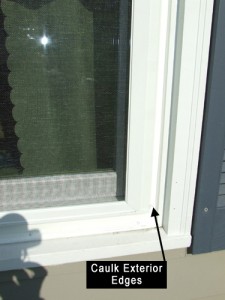 Finally you should caulk all of the exterior edges of the new replacement window unit where it meets the existing window opening. This helps create a better air seal and also helps keep out wind driven rain.
Finally you should caulk all of the exterior edges of the new replacement window unit where it meets the existing window opening. This helps create a better air seal and also helps keep out wind driven rain.
Final Thoughts On Installing Replacement Windows
As I said earlier installing replacement windows is a project that most DIY (do-it-yourself) folks can handle. It takes between 1 hour and 2 hours to completely install a replacement window. By doing it yourself you can save between $200 and $400 per window! Combine that with the huge Stimulus Tax Rebates For Windows and this is a project that will pay you back very quickly.




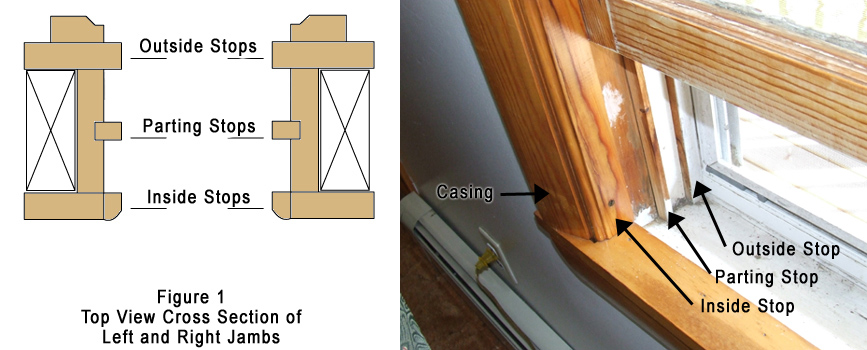
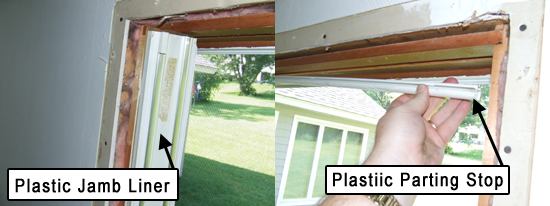
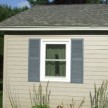
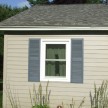

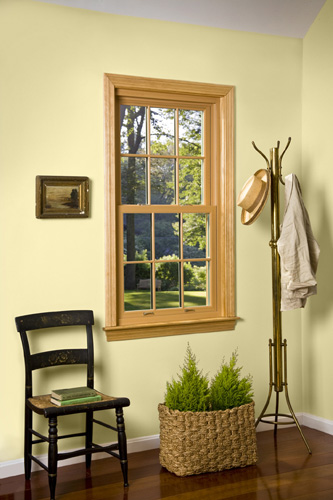









In order to install vinyl replacement windows without a helper I remove the upper and lower sash. I then can pick up the frame with one hand and easily install it without assistance. Once the frame is trued, shimmed, caulked and stops reinstalled I insert the upper and lower sash.
@ Harry – Thanks for the tip, I often do that as well if I’m working alone.
I just did a few replacement windows and I ended up removing the window stool for each installation. I did try to insert the replacement without removing the stool but the fit seemed too stubborn. The replacements slid in perfectly with the stool removed though. Was I just not trying hard enough?
HT – It really depends on who measured them and how tight it is. Typically the bottom of the window is placed in the hole behind the stool then the top is tilted up in place.
Hello: We recently started remodeling our old farm house and we hired a local construction company to put in replacement windows.Well we had 11 done and now we have a 1 1/2″ gap around the windows and where the old had wood added there is bare wood. My question is shouldn’t this outfit finish the inside of the windows rather than leaving gaps and no trim unless I now pay extra?
Richard – I’ll try not to “pick” sides here, just give you my observation.
– Replacing windows almost always results in the need for interior trim work
– Good estimates would include either a price to do that work, or a mention that it’s not included. Sometimes the guys that do replacement windows are not well suited for trim work.
– I’ve seen estimates that leave this out, they are trying to make a sale and the added cost of finish carpentry can kill a deal.
First I’d review your estimate, see if it mentions this issue. Next I’d talk to you installer, ask if they offer that service and ask for a written estimate.
Good luck.
Hi
We had harvy windows installed several years ago. I now have a few rotted out exterior window sills. Question: do you need to remove the insert to replace the sill? If so I don’t see screws in the holes on the sides, weird.
Any comments will be appreciated,
David
If they are replacement windows then no.